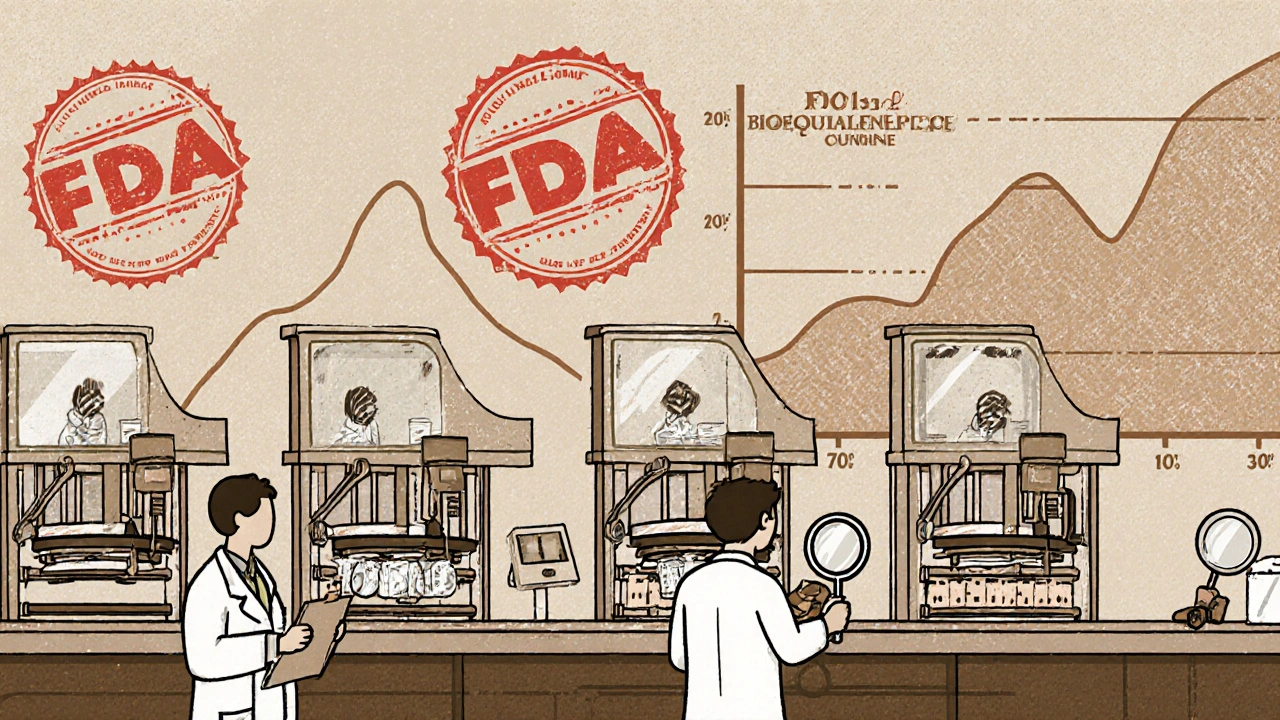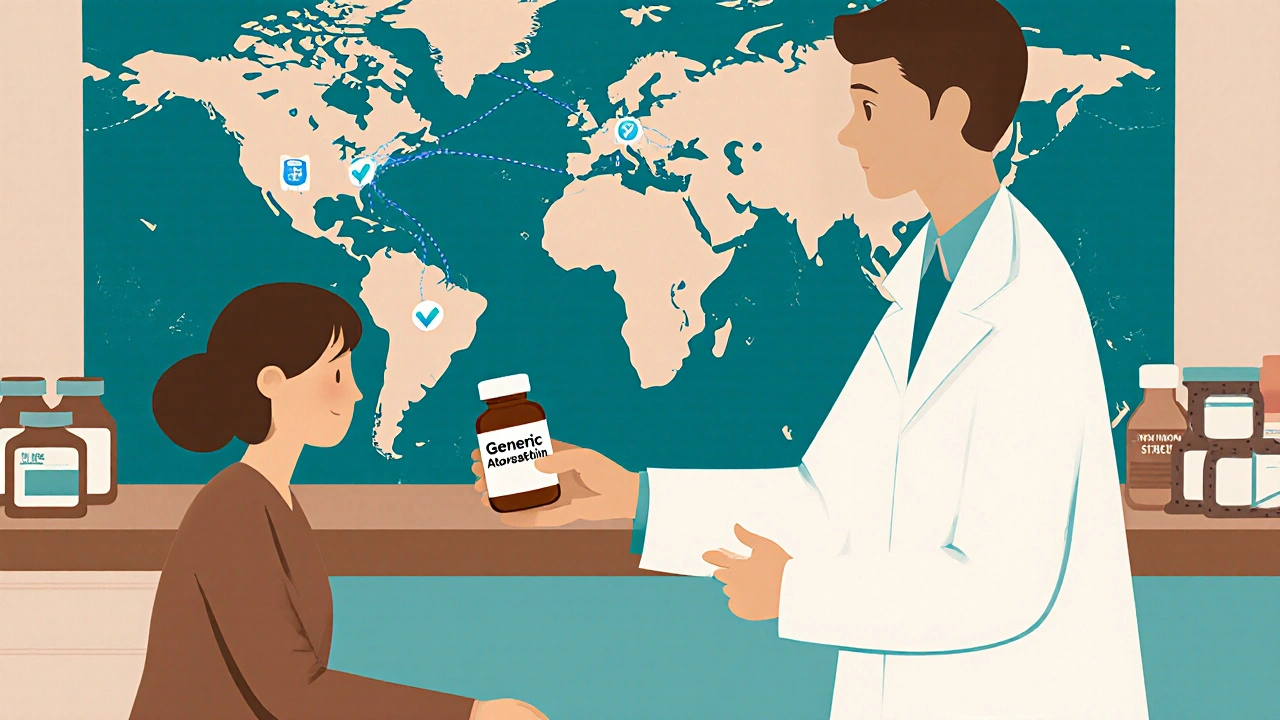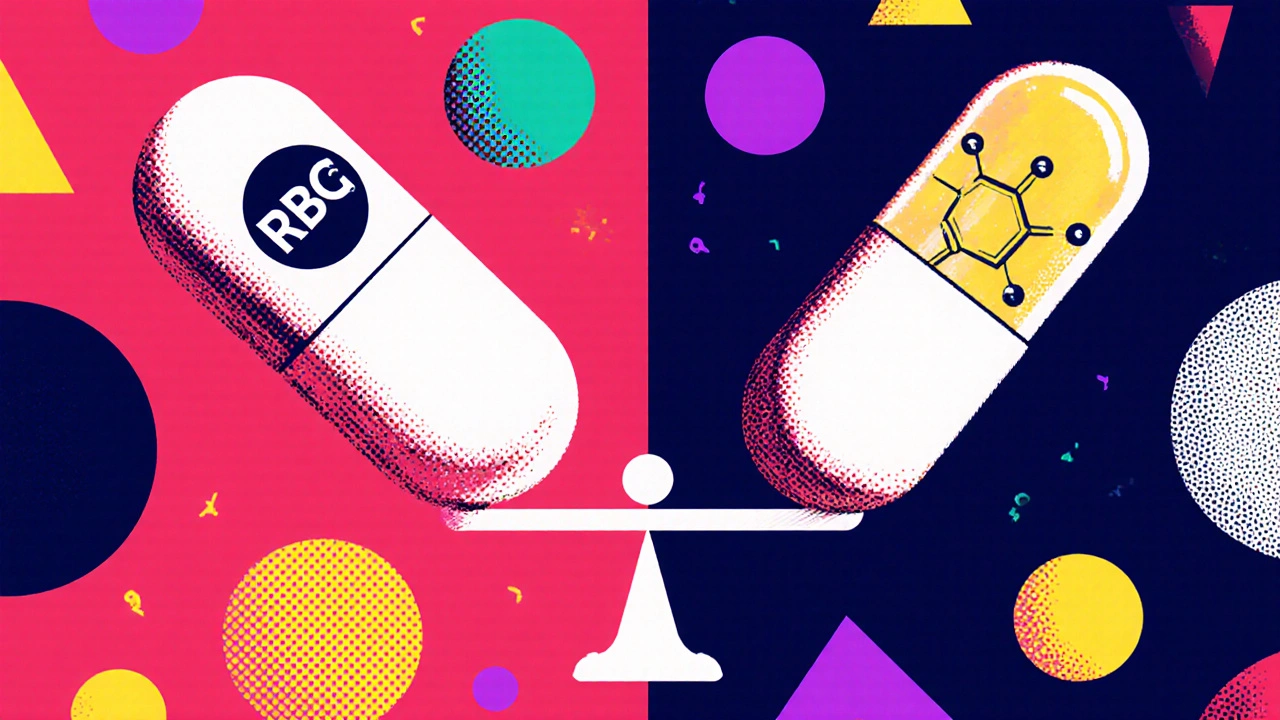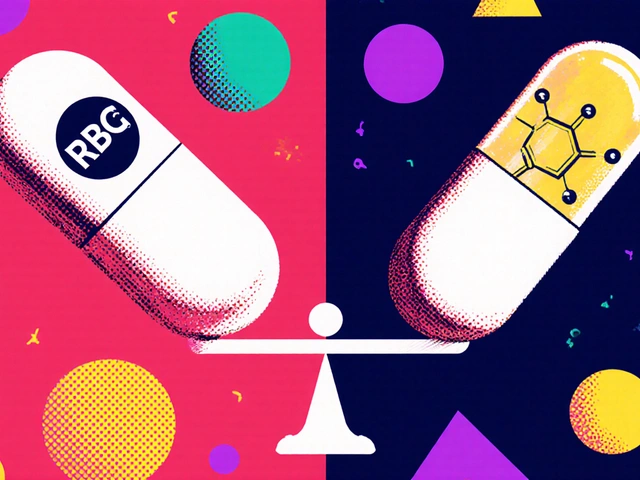Generic drugs are exact copies of brand-name medications in every way that matters - the same active ingredient, same strength, same way of being taken, and same effect on your body. They’re not cheaper because they’re weaker. They’re cheaper because they don’t need to repeat the same expensive research that the original drug did. By the time a generic hits the market, the patent on the brand-name version has expired - usually after 20 years - and manufacturers can legally make the same medicine without paying for the original development costs.
What Makes a Drug "Generic"?
A generic drug isn’t just "similar" to the brand-name version. It has to be identical in its active ingredient. That means if you take a brand-name pill like Lipitor (atorvastatin), the generic version contains exactly the same chemical compound: atorvastatin calcium. No more, no less. The FDA requires this. It’s not a suggestion. It’s a legal standard.
But what about the rest? The shape? The color? The flavor? Those can be different. That’s because trademark laws prevent generic manufacturers from copying the exact look of the brand-name pill. A generic atorvastatin might be blue instead of white, oval instead of round, and taste slightly different if it’s chewable. But those differences are only cosmetic. They don’t change how the drug works inside your body.
The inactive ingredients - things like fillers, dyes, or preservatives - might vary. But these can’t affect how the drug is absorbed or how well it works. Every generic must pass strict tests to prove that these differences don’t impact safety or effectiveness.
How Do We Know Generics Work the Same?
The key word here is bioequivalence. That’s the scientific term for saying: "This generic delivers the same amount of medicine into your bloodstream at the same speed as the brand-name drug."
To prove this, manufacturers run studies with 24 to 36 healthy volunteers. They give half the group the brand-name drug and half the generic. Then they measure how much of the drug enters the blood over time. The results must fall within a very tight range: the generic’s absorption rate must be between 80% and 125% of the brand’s. That’s not a big difference - it’s less than what you’d see if you took the same brand-name pill on a full stomach versus an empty one.
The FDA doesn’t just trust the data. They inspect the factories. Every year, they conduct about 3,500 inspections of generic drug plants around the world. These aren’t scheduled visits. They’re random. The inspectors check everything: how the powder is mixed, how the tablets are pressed, how the capsules are sealed. The standards are the same as for brand-name drugs. There’s no "generic quality" - only quality, period.
Why Are Generics So Much Cheaper?
Brand-name drugs cost billions to develop. Companies spend an average of $2.6 billion on research, clinical trials, and regulatory filings before a single pill is sold. That’s why the first version of a drug is expensive - the company needs to recoup that investment.
Generic manufacturers don’t have to do that. Thanks to the Hatch-Waxman Act of 1984, they can file an Abbreviated New Drug Application (ANDA). That means they skip the expensive animal and human trials. Instead, they prove bioequivalence and show their manufacturing process meets FDA standards. That cuts development costs by over 90%.
The result? Generics typically cost 80 to 85% less than the brand. In some cases, when five or more companies make the same generic, prices drop to just 9% of the original brand price. Over the past decade, generic drugs saved the U.S. healthcare system more than $2 trillion.
And the numbers speak for themselves: 90% of all prescriptions filled in the U.S. are for generics. But those 90% make up only 13% of total drug spending. That’s the power of competition.

Are There Any Exceptions?
For most drugs, the answer is no - generics are just as safe and effective. But there are a few tricky areas.
Drugs with a narrow therapeutic index (NTI) are the exception. These are medications where even a tiny change in blood level can cause problems. Examples include warfarin (a blood thinner), levothyroxine (for thyroid disorders), and some anti-seizure drugs. For these, doctors may prefer to stick with one version - brand or generic - because switching could cause small fluctuations in how the drug works.
That doesn’t mean generics are unsafe. It just means extra care is needed. Many doctors will monitor blood levels more closely if they switch a patient from brand to generic for an NTI drug. The FDA says these switches are still acceptable, but they recommend close monitoring.
Another exception is biologics - complex drugs made from living cells, like insulin or rheumatoid arthritis treatments. These can’t be copied exactly. Instead, we have "biosimilars," which are highly similar but not identical. They’re more expensive than traditional generics and often only 20-30% cheaper than the original.
How Are Generics Approved and Monitored?
The process starts after the brand-name drug’s patent expires. A generic company submits an ANDA to the FDA. This includes detailed data on the drug’s chemistry, how it’s made, and bioequivalence studies. The FDA reviews it - usually within 10 months - and either approves it or asks for more information.
Once approved, the drug goes into production. But the FDA doesn’t stop checking. They continue to inspect factories, test random samples from store shelves, and track side effects through their post-market surveillance system. If a generic drug causes unexpected problems, the FDA can pull it from the market - just like they would with a brand-name drug.
Pharmacists can usually substitute a generic for a brand-name drug unless the doctor writes "dispense as written" on the prescription. In 49 U.S. states, this substitution is automatic. The only exception is if the prescriber specifically blocks it - usually for NTI drugs or personal preference.

What About Quality and Safety?
Some people worry that generics are made in countries with looser regulations. But the FDA holds all facilities - whether in the U.S., India, or China - to the same standards. In fact, over 80% of the active ingredients in U.S. generics come from India and China. The FDA inspects those facilities just as often as U.S.-based ones.
Drug shortages have increased in recent years, and some are linked to quality issues at generic manufacturing plants. But these are rare. The FDA has responded by increasing inspections and tightening rules for complex generics like inhalers and eye drops. They’ve also created specific guidelines for over 30 types of difficult-to-copy drugs to make sure generics work correctly.
What’s Next for Generic Drugs?
Between 2023 and 2027, over 350 brand-name drugs with combined annual sales of $138 billion will lose patent protection. That means a wave of new generics is coming - including drugs for high blood pressure, diabetes, depression, and even some cancer treatments.
At the same time, the industry is changing. A few big companies now control half the U.S. generic market. That could limit competition and keep prices higher than they should be. The FDA and FTC are watching closely.
Another trend is "authorized generics" - when the original brand-name company makes its own generic version and sells it under a different label. This happens when they want to compete with other generics right after patent expiry. It’s a business move, but it still lowers prices for patients.
For now, the message is clear: if your doctor prescribes a brand-name drug and a generic is available, ask for it. You’ll get the same medicine, same results, and save a lot of money.
Are generic drugs as safe as brand-name drugs?
Yes. The FDA requires generic drugs to meet the same safety and quality standards as brand-name drugs. They must contain the same active ingredient, work the same way in the body, and be manufactured under the same strict rules. There is no difference in safety between a generic and its brand-name counterpart.
Why do generic pills look different from brand-name pills?
By law, generic drugs can’t look exactly like the brand-name version because of trademark rules. That’s why the color, shape, or size might be different. But these changes are only cosmetic. The active ingredient and how the drug works are identical. The differences in appearance don’t affect safety or effectiveness.
Can I switch from a brand-name drug to a generic without any risk?
For most medications, yes. Over 90% of prescriptions are for generics, and studies show they work just as well. However, for drugs with a narrow therapeutic index - like warfarin or levothyroxine - your doctor may prefer you stay on one version to avoid small changes in blood levels. Always talk to your doctor before switching.
Do generic drugs take longer to work?
No. Generic drugs must be bioequivalent to the brand-name version, meaning they enter your bloodstream at the same rate and to the same extent. If the brand-name drug starts working in 30 minutes, the generic will too. There’s no delay in effectiveness.
Are all generic drugs made in the U.S.?
No. Over 80% of the active ingredients in U.S. generic drugs come from facilities in India and China. But the FDA inspects all of these factories using the same standards as U.S. plants. The location doesn’t determine quality - the inspection does.
What Should You Do?
If you’re on a brand-name drug and it’s expensive, ask your pharmacist or doctor if a generic is available. You’ll get the same medicine, same results, and save hundreds - sometimes thousands - of dollars a year. Don’t assume a higher price means better quality. In the case of generic drugs, it just means you’re paying for marketing, not medicine.
The system works. Generics are one of the most successful public health innovations in modern medicine. They make essential treatments affordable. They don’t cut corners. They just cut the cost - without cutting the care.


